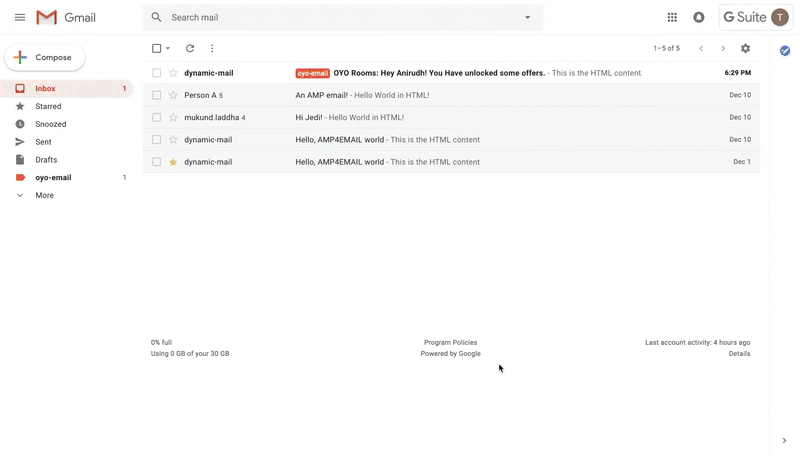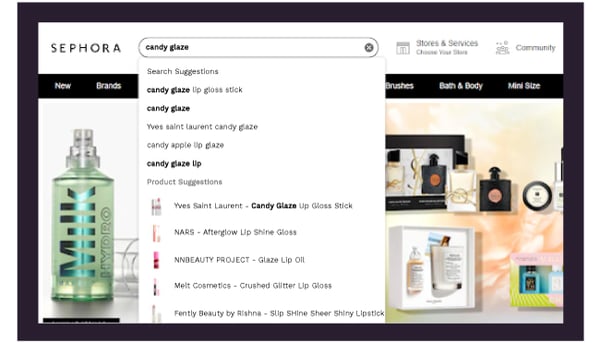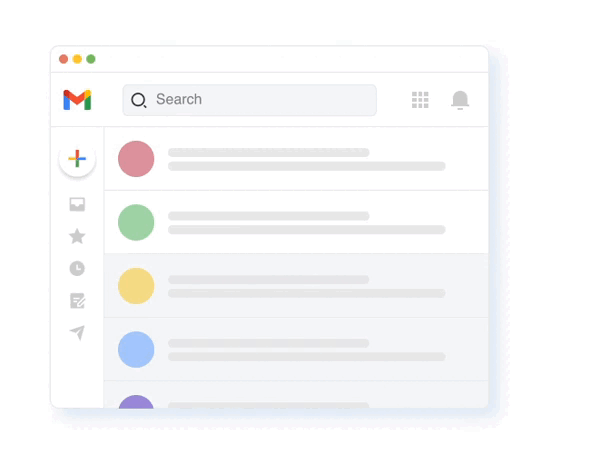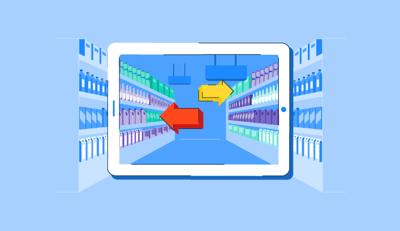July 30, 2023
 by Khuslen Khosbayar / July 30, 2023
by Khuslen Khosbayar / July 30, 2023

From fierce competition to evolving customer preferences, retailers have a lot to deal with.
The key to winning the hearts and minds of buyers is understanding their needs, connecting with them across multiple touchpoints, and using innovative approaches to stand out in a crowded marketplace.
This is where retail marketing comes in.
Retail marketing is an umbrella term for getting people interested in your products, improving sales, and building customer loyalty. Simple elements, like your store’s layout, website, social media presence, and the expertise of your employees, play a vital role in your company’s retail marketing plan.
However, the definition of retail marketing has expanded exponentially with the rise of online retailers and online shopping’s emergence as a habit in general. The COVID-19 pandemic forced online shopping growth as many of us were inside our homes.
Nowadays, brands have blended physical stores and online stores to optimize the overall customer experience, blurring the lines between digital and traditional retail marketing and reinforcing “everywhere commerce” as the key to success this year and forward.
Online retail marketing has become a crucial part of every brand’s growth strategy as lockdowns and stay-at-home orders over the past few years have led consumers to shop online more frequently. However, even now, as we move past pandemic-level precautions, 57% of US consumers still shop online once a week or more.
Online retail marketing also offers many meaningful ways to get to know your shoppers and, in return, provide a personalized and smooth shopping experience that leads to a higher return on investment (ROI). To gain deeper insights into customer preferences and competitor pricing, retailers can utilize tools like a Google shopping scraper. This enables the collection of real-time data from Google Shopping, facilitating informed decisions on pricing strategies and product offerings. It also equips you with the right tools to identify and reach out to your target shoppers.
Going online and introducing a direct-to-consumer (D2C) model brings ownership back to your brand rather than relying on third-party marketplaces that may taint your customer experience and your reputation with shoppers along with it.
Online sales are expected to continue to increase.
According to the U.S. Department of Commerce, e-commerce sales topped $1 trillion for the first time, coming in at $1.03 trillion in 2022. And this upward trend isn’t going to stop – e-commerce sales are expected to grow by 10.4% in 2023.
However, this upward trend doesn’t mean that it’ll be easy for brands to get more online sales due to an upcoming year shaped by tighter budgets and economic headwinds. Marketing budgets are decreasing, while rising costs and falling ROI are reducing its spending power. This pressures organizations to deliver profitability, even as they face tighter budgets and decreasing consumer spending.
But in the midst of these economic challenges, you’ll find that channels are also evolving to provide D2C retail marketers with new opportunities to reach different segments. For example, social network platforms are emerging as significant channels for interacting, browsing, shopping, and purchasing.
Now let’s detail the steps you need to take to succeed in this year's volatile retail market.
How do you begin marketing to retail customers? Following these three key steps.
Your best customers drive the vast majority of your profits; about 20% of customers account for up to 60% of revenue. These are your brand’s lifeline and the key to growing your business.
Acquiring a new customer can cost five to seven times more than retaining an old one. Instead of focusing on acquiring new customers, shift attention to providing a differentiated experience to your best customers as a compelling strategy to foster customer loyalty and boost your brand’s long-term profitability.
According to a McKinsey study, 76% of consumers say they’re more likely to purchase from brands that provide personalized experiences, and 78% say they’re more likely to repeat purchases and recommend these brands to others.
It’s also important to note the evolving nature of personalization. It’s no longer just a birthday message or an anniversary gift card. Personalization is now about ensuring consistent messaging across multiple channels in tune with where the shopper is in their lifecycle.
Shoppers expect brands to remember who they are, where they came from, and what they liked, regardless of which channel they used to find you. They’ll quickly turn to other brands if this expectation isn’t met. If you don’t perfect your personalization efforts, your brand might lose out on potential customers or existing ones.
Due to the attention recession, it’s challenging for brands to capture shoppers’ attention. So whenever you do, keep them until conversion as you shorten the pathway to purchase.
One way to do so is through inbox commerce powered by AMP for Email, an open-source technology released by Google in 2019 that allows emails to function like apps or microsites.
Recipients can book appointments, search for flights, shop, make reservations, submit reviews, chat, and check out without leaving their inbox. This shortens the email conversion funnel by cutting the redirects in between, saving shoppers time and increasing their satisfaction with your brand.

Source: Netcore Cloud
Thanks to inbox commerce, you can now create dynamic, interactive experiences that infuse web and app functionality directly into your customers’ email. But the chances are you’re currently not taking advantage of this technology.
Social commerce is another method that cuts the pathway to purchase and makes shopping more convenient. Top social media platforms like Whatsapp, Instagram, and TikTok all have built-in native social commerce features like in-app checkout, buy buttons, and instant messaging tools that make social media intuitive for purchases.
Social commerce earnings are estimated to reach nearly $80 billion by 2025 in the US.
These three steps sound easy enough: find your best customers, personalize their experiences across channels, and convert them in-channel. But how do you actually go about finding your best customers?
Not knowing who your target audience is, is like shooting an arrow in the dark with no clear view of your goal. Identifying your best shoppers takes effort. Here are a few ways to get you started.
A standard method of identifying your best customers is conducting an RFM analysis, a data-driven customer segmentation technique that positions customers on a matrix based on their purchasing behaviors' recency, frequency, and monetary value in a given time.
By combining these three key metrics from your transactional data, your brand can segment customers into buckets of high spenders, loyal customers, potential loyalists, or new customers.
With RFM segmentation, you can identify the following unique segments from your shoppers:
Cohort analysis is a type of behavioral analytics where you take a group of customers and analyze their behavioral patterns based on their shared traits to understand their actions better.
A cohort is a group of people with a shared characteristic like the day they signed up for your email list or made their first purchase online.
Cohort analysis allows you to ask more specific questions and make informed product decisions to reduce churn and drastically increase revenue. You could also call it customer churn analysis.
The two most common types of cohorts are as follows:
You can use daily or monthly cohorts to track engagement or retention over time, which will then help you identify your best or most loyal customers based on those metrics. For example, you can create acquisition cohorts for users who downloaded your app in a week. Users who signed up each day will be considered a separate cohort.
Then you can track what percentage of those cohorts remained active daily or weekly. This is an excellent way of doing a retention analysis to find your most active users. Now with this information, you can provide differentiated and rewarding experiences to these top users to build loyalty.
With AI, marketers can automate customer segmentation, an integral part of offering a relevant and personalized shopper experience.
AI algorithms can analyze vast amounts of data from various sources, including multipoint customer interactions, social media, website visits, and purchase history, to comprehensively understand each customer. It can then automatically place them into pre-built customer segments.
On top of this, you can use predictive modeling to forecast the future actions of your varying customer segments by analyzing their past behavior. This predictive capability can be vital to improving customer retention.
By analyzing customer data, factors likely to cause customers to churn or segments of customers likely to churn within the next few months can be identified. With this information, you can start taking preventative action by creating personalized marketing efforts to retain them.
Retail marketing can go wrong in a number of ways. Follow these best practices to offer a seamless shopping experience and avoid bottlenecks.
Accurate personalization is one of the best methods to improve your onsite experience for higher conversions.
This means customizing experiences for your shoppers on every corner of your website: web pop-ups to prevent cart abandonment or personalized product recommendations on key touch points such as the home page, product display page, and category listing page. According to Yieldify, 76% of businesses use real-time behavioral data for personalization.
Your searchers are more likely to make purchases, which makes search a crucial target for business growth. Research by Screen Pages has discovered that higher conversion rates directly correlate with user-friendly onsite search experiences.
With onsite search, the average conversion rate jumped from 2.77% to 4.63% – an increase of 80%. So if you can optimize your onsite search experience, you’re guaranteed to see these improvements in conversions.
Here's an example of how an effective onsite search capability can improve shoppers’ experience.

Source: Sephora
Shoppers want to achieve their goals in as little time and in as few steps as possible, yet 72% of e-commerce sites fail to deliver on-site search customer expectations.
After their first search, 21% of shoppers simply leave the website out of frustration, while another 20% stay for another search, though the customer experience is already tarnished. The surest way to increase conversions and build loyal customers is through the best onsite search experience possible.
Shoppers today are predominantly on mobile. Consumers have little reason to turn to their desktops with social media platforms, apps, emails, and other communication channels catering to the majority of their needs on the go.
Moreover, 43.4% of total e-commerce sales will come from mobile commerce in 2023. This means that brands must adopt a mobile-first approach to meet shoppers where they are.
They also prefer brands with superior app experiences: 63% of smartphone users are likelier to purchase from companies whose mobile sites or apps offer relevant product recommendations.
Brands can improve the app experience and provide personalized product recommendations or send relevant app push notifications to retain customers and build loyalty.
Shoppers today want their shopping experience to be short, simple, and smooth. Providing this for your shoppers means personalizing their experiences across email, SMS, website, and other push channels. However, it’s all a balancing act.
Consumers have been growing wary of sharing their personal data with brands, especially since it’s not always clear what information you collect from them. According to a report released by KPMG, 86% of the respondents said they’re growing concerned about data privacy, and 78% expressed fears about the amount of data collected.
A lack of digital transparency and trust pushes a consumer’s default attitude toward skepticism. Brands must balance their personalization efforts with consumers’ privacy concerns.
You have to foster trust. Give your shoppers the simple experience they seek without tracking their personally identifiable information (PII) or by building transparency around what personal data is being used.
Customers want to find and purchase in fewer steps and with an easy experience. Being taken to external websites or even mobile apps seems burdensome for shoppers. This has pushed brands to evolve and move the shopping experience to where the shoppers are, and right now, that’s social media.
Retailers should keep up with and invest in technologies that help provide a seamless purchasing experience within social channels and shoppable media to nudge users toward buying there.
According to Deloitte’s 2023 Retail Industry Outlook, enabling shoppable tags with product information, embedding the brand website into the social media app, and enabling in-app transactions can help reduce friction on the shopping journey.
Retail brands adopt omnichannel marketing to increase conversions and sales. Omnichannel shopper marketing recognizes the same shopper visit after visit and offers high-quality experiences across channels, even when the distinctions between offline and online become increasingly fuzzy. McKinsey research shows that omnichannel customers spend 1.7 times more money than single-channel shoppers.
It’s no longer satisfactory to just move freely between different shopping environments. Customers also want to be recognized wherever they go.
Let’s say someone makes regular purchases online. They expect to be treated as a loyal customer in the brick-and-mortar store, too. A frictionless experience allows online and in-store retail offerings to complement each other rather than compete with one another, delivering a level of experience that keeps customers coming back.
Staying current with the top retail marketing trends allows you to customize your messaging with the most up-to-date information. Here are some retail marketing trends to keep you competitive and not outdated.
Inbox commerce is powered by AMP for email, a revolutionary technology that allows emails to function like apps or microsites. Recipients can book appointments, search for flights, shop, make reservations, submit reviews, chat, and check out inside the email.

Source: Netcore Cloud
The capabilities offered by this technology enable what you call inbox commerce: your potential customers are able to browse products, use promotions, and cart products all within an email without being taken to external sites. This way, you’re bringing the conversion funnel straight to their inbox.
Inbox commerce not only shortens the email conversion funnel by cutting the redirects in between, leading to frictionless conversion. This capability also saves shoppers time, increasing their satisfaction with your brand.
The convenience and relevance offered by inbox commerce are also a great way to reactivate dormant users with interactive emails where they can accomplish key tasks such as purchases and save-for-laters without leaving!
Visionary marketers are embracing the technology, shifting focus from the static inbox of the past toward an inbox commerce future. Inbox commerce is supported by Gmail, Yahoo! Mail, Mail.ru, and FairEmail.
Most B2C senders in the US can currently reach 30-50% of their email audience with AMP-enabled messages. Those whose email service providers (ESPs) do not support AMP yet will receive the fall-back HTML version of the email.
Some inbox commerce use cases retailers can try for higher engagement and conversions:
The rise of social commerce has been one of the most notable trends of recent times.
Social commerce is different from traditional social media marketing strategies, where shoppers view a brand’s content and visit their website to start shopping. Instead, social platforms like Facebook Shops and Instagram Shops act as virtual retail stores.
Social commerce is booming because social media usage is. Research shows the typical social media user now spends about 15% of their waking life on platforms.
Shoppers can directly message and receive immediate responses to their questions, further improving and shortening the path to purchase.
It’s also a great way to reach a larger target audience, gather data on your audience, receive customer feedback, utilize social proof to promote your brand, and provide an easy shopping experience for your visitors.
Looking ahead, the future of online retail holds exciting possibilities for brands that adapt to evolving consumer demands and embrace emerging technologies to succeed.
Shoppers want to find and buy as conveniently as possible. Shorten and simplify this process with retail marketing to attract and retain more customers. Personalization helps you find the right balance between tailored experiences and privacy concerns.
As shoppers combine more and more shopping methods, whether in-store, online, or virtually, brands need to deliver a seamless and consistent experience across all.
It's about meeting your customers where they are and staying updated with new technologies that excite them. Here are the top 6 retail technology trends to get you started.
Khuslen Khosbayar is an Associate Product Marketing Manager at Netcore, where she combines her passion for technology and storytelling to drive product awareness and adoption of Netcore’s products in the US.
What will the future of retail look like?
These days it seems like everything is done online.
 by Deirdre O'Donoghue
by Deirdre O'Donoghue
For much of modern history, manufacturers have brought their products to market by working...
 by Andrej Kovačević
by Andrej Kovačević
What will the future of retail look like?
These days it seems like everything is done online.
 by Deirdre O'Donoghue
by Deirdre O'Donoghue


